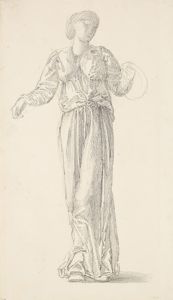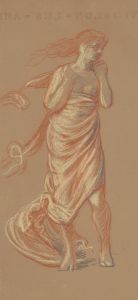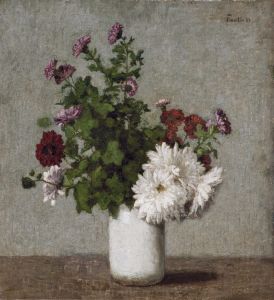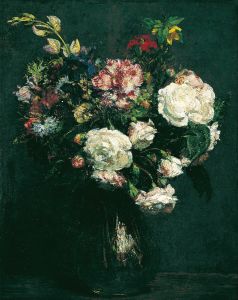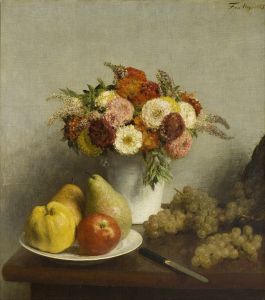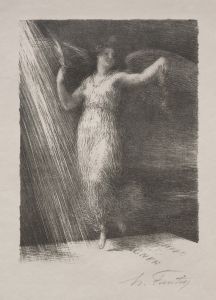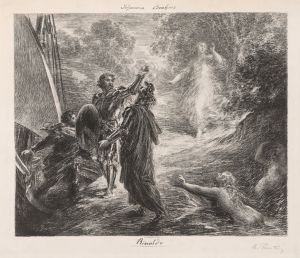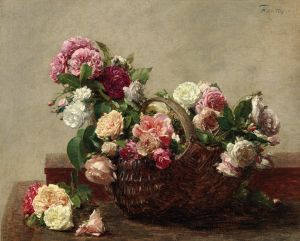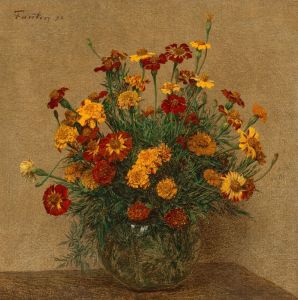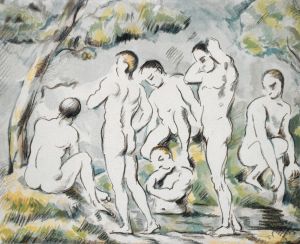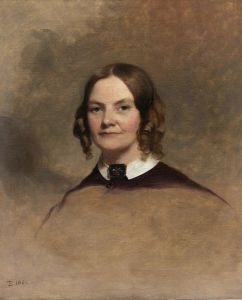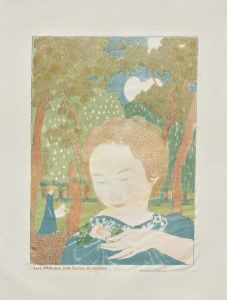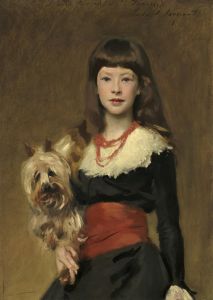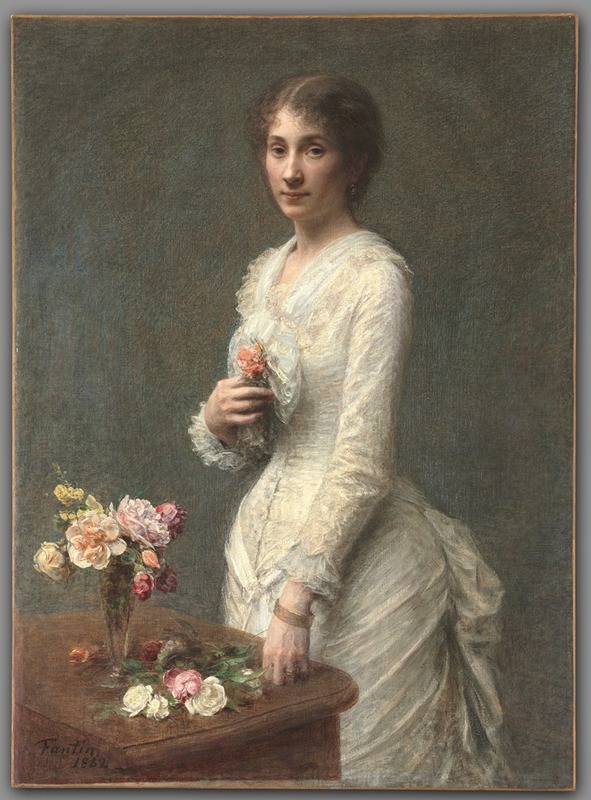
Madame Lerolle
A hand-painted replica of Henri Fantin-Latour’s masterpiece Madame Lerolle, meticulously crafted by professional artists to capture the true essence of the original. Each piece is created with museum-quality canvas and rare mineral pigments, carefully painted by experienced artists with delicate brushstrokes and rich, layered colors to perfectly recreate the texture of the original artwork. Unlike machine-printed reproductions, this hand-painted version brings the painting to life, infused with the artist’s emotions and skill in every stroke. Whether for personal collection or home decoration, it instantly elevates the artistic atmosphere of any space.
Henri Fantin-Latour, a renowned French painter known for his still lifes and group portraits, created the painting "Madame Lerolle" in the late 19th century. Fantin-Latour was born in 1836 in Grenoble, France, and became an influential figure in the art world, particularly noted for his ability to capture the subtleties of human expression and the delicate interplay of light and shadow.
"Madame Lerolle" is a portrait that exemplifies Fantin-Latour's skill in portraying the human figure with sensitivity and depth. The painting features a woman identified as Madame Lerolle, who was part of the artistic and cultural milieu of Paris during this period. The Lerolle family was known for their connections to the arts, with several family members being patrons and supporters of artists and musicians. This connection likely provided Fantin-Latour with the opportunity to paint Madame Lerolle, capturing her likeness with his characteristic attention to detail and nuance.
Fantin-Latour's style is often associated with realism, yet he also incorporated elements of impressionism, particularly in his use of color and light. In "Madame Lerolle," these elements are evident in the soft rendering of the subject's features and the subtle play of light across her face and attire. The background of the painting is typically understated, a common trait in Fantin-Latour's portraits, which serves to focus the viewer's attention on the subject.
The painting reflects the fashion and aesthetic sensibilities of the time, with Madame Lerolle depicted in attire that suggests both elegance and simplicity. Fantin-Latour's portraits often convey a sense of intimacy and immediacy, inviting the viewer to engage with the subject on a personal level. This approach is evident in "Madame Lerolle," where the sitter's expression and posture suggest a moment captured in time, offering a glimpse into her personality and presence.
Fantin-Latour's work, including "Madame Lerolle," is celebrated for its technical proficiency and emotional resonance. His ability to convey the inner life of his subjects through subtle gestures and expressions has earned him a lasting place in the history of art. While he is perhaps best known for his still lifes of flowers, his portraits remain an important part of his oeuvre, demonstrating his versatility and depth as an artist.
The painting "Madame Lerolle" is part of Fantin-Latour's broader body of work that continues to be studied and appreciated for its contribution to the development of modern portraiture. His influence can be seen in the works of later artists who sought to capture the essence of their subjects with similar sensitivity and insight.
Overall, Henri Fantin-Latour's "Madame Lerolle" stands as a testament to his skill as a portraitist and his ability to capture the human spirit with grace and precision. The painting remains a significant example of 19th-century portraiture, reflecting both the artistic trends of the time and the enduring appeal of Fantin-Latour's unique vision.





